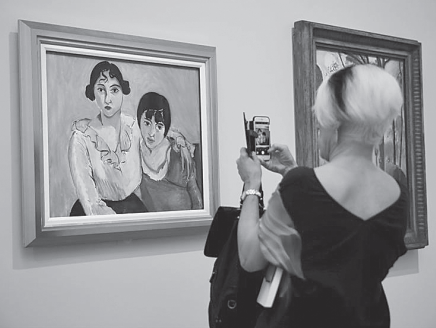Chinese elements feature in retrospective of Picasso and Matisse

CANBERRA-Spanish artist Pablo Picasso once said: "Nobody ever looked at Matisse's work as thoroughly as I did. And he at mine."
An exhibition that opened on Dec 13 at the National Gallery of Australia explores the relationship between two of history's greatest artistic rivals: Picasso and Henri Matisse.
The show, which runs through April 13 next year, features more than 200 paintings, sculptures, drawings, prints, illustrated books and costumes by the pair-many of which are in the southern hemisphere for the first time.
NGA director Nick Mitzevich says Matisse and Picasso were both radicals, who took art in a new direction.
"Each used the other as an artistic foil and drew inspiration from their rivalry, which spurred their creative brilliance to even greater heights," he says. "This creative friction over half a century of artistic rivalry turned the art world as we knew it on its head."
Jane Kinsman, NGA's head of international art and curator of the exhibition, says: "Between them, they dramatically changed Western modern art at the beginning of the 20th century."
She says that despite being poles apart in age, style and background, the pair formed a relationship and came together, "first quite aggressively, because each one was trying to be the leader of the French avant-garde movement. But then they recognized each other's talent.
"Over the years they started borrowing from each other-ideas about space, color, subject matter-everything," she says, pointing at Picasso's Woman from Arles as an example.
In the painting, Picasso employs a dynamic use of color, including pink, blue, purple, green, red and orange against a yellow background.
Matisse had criticized Picasso's cubism as static and monochrome. "This is a complete difference," says Kinsman. "It's full of life and full of color."
The curator points to Matisse's Olga Meerson for comparison.
"He started looking at the geometric forms of cubism, and he has toned down the palette," Kinsman says. "So, that's a way of Matisse being influenced by Picasso."
The exhibition is not just about paintings.
Both artists designed costumes for the Ballets Russes. Exhibition visitors will see boots, breeches and robes designed by the pair. Some robes created by Matisse feature a Chinese style as they were designed for The Song of the Nightingale, which was set in the Chinese imperial court.
In 1941, Matisse underwent surgery for colonic cancer. Unable to concentrate on painting, he started making collages, some of which are shown in the last room of the exhibition.
After he died in 1954, Picasso painted a series of homages to Matisse's love of the Middle East and North Africa, and adopted many of Matisse's favored motifs: the odalisque, the open window with a view to the outside world and Islamic decorative arts.
At the exit of the exhibition, the gallery printed Matisse's words about Picasso on the wall: "When one of us dies, there will be some things the other will never be able to talk of with anyone else."

Today's Top News
- Another sign of Japan's right-wingers' dangerous ambition to break free of all postwar constraints
- Hainan's special customs operations start strong
- Macao SAR holds flag-raising, reception to mark 26th anniversary of return to motherland
- China issues rules to regulate pricing practices of internet platforms
- US hits over 70 IS-linked targets in Syria in massive retaliatory strikes
- Coffee needs cooperation, not confrontation






























